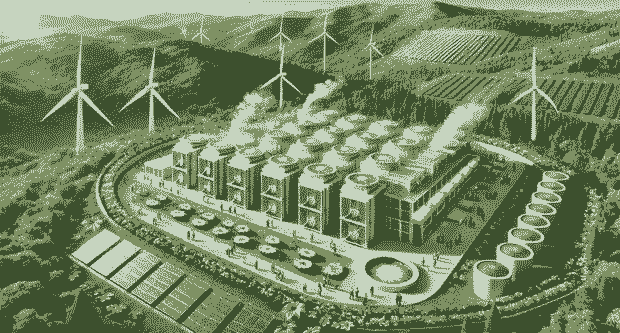Recycling is like a superhero for the planet, swooping in to save the day by giving our waste a second chance at a useful life. It’s a process that transforms materials that would otherwise end up in landfills into new products, reducing the strain on our environment and conserving valuable resources. Let’s take a closer look at the various ways recycling plays a crucial role in preserving the health of our planet.
1. Conserving Natural Resources:
One of the primary benefits of recycling is its role in conserving natural resources. Many of the materials we use in our daily lives, such as paper, plastic, glass, and metal, come from limited and non-renewable resources. By recycling these materials, we reduce the demand for raw materials, lessening the pressure on ecosystems and the environment.
Paper Recycling:
Consider the life cycle of a simple piece of paper. Instead of cutting down more trees to make new paper, recycling paper allows us to reuse existing fibers. Trees play a crucial role in maintaining the balance of our ecosystems by absorbing carbon dioxide and producing oxygen. By recycling paper, we conserve forests, protect biodiversity, and maintain the health of our planet.
Plastic Recycling:
Plastic pollution is a significant environmental concern, as it takes hundreds of years for plastic to decompose. Recycling plastic helps mitigate this issue by reducing the need for new plastic production. Additionally, it prevents plastic waste from ending up in oceans and waterways, where it can harm marine life and disrupt ecosystems.
2. Energy Conservation:
Recycling often requires less energy than producing items from raw materials. Manufacturing products from recycled materials typically involves fewer processing steps, leading to significant energy savings. This reduction in energy consumption has positive ripple effects on the environment.
Aluminum Recycling:
Aluminum is a commonly recycled material, and the process of recycling it requires only about 5% of the energy needed to produce aluminum from bauxite ore. By recycling aluminum, we not only conserve energy but also reduce greenhouse gas emissions associated with the extraction and processing of raw materials.
Glass Recycling:
Similarly, recycling glass saves energy compared to producing new glass from raw materials. The production of glass from recycled glass cullet (broken or waste glass) requires lower temperatures, resulting in decreased energy consumption and a smaller carbon footprint.
3. Reducing Greenhouse Gas Emissions:
The production of goods from raw materials often involves significant greenhouse gas emissions. By recycling materials, we can cut down on these emissions and contribute to the fight against climate change.
Paper and Greenhouse Gases:
When paper decomposes in landfills, it releases methane, a potent greenhouse gas. Recycling paper reduces the amount of paper waste in landfills, mitigating the release of methane and helping combat climate change.
Plastic and Carbon Footprint:
Producing plastic from raw materials contributes to the emission of greenhouse gases. Recycling plastic reduces the need for new production, decreasing the carbon footprint associated with the manufacturing process.
4. Minimizing Landfill Impact:
Landfills are not infinite, and the more waste they receive, the greater their environmental impact. Recycling plays a vital role in minimizing the volume of waste sent to landfills, extending their lifespan and reducing the potential for environmental harm.
E-Waste Recycling:
Electronic waste, or e-waste, poses a unique challenge due to the presence of hazardous materials. Recycling e-waste ensures that valuable metals are recovered and harmful substances are properly handled, preventing them from leaching into the soil and water in landfills.
Reducing Litter and Ocean Pollution:
Improper disposal of waste can lead to litter, and in the case of plastic, it can contribute to ocean pollution. Recycling helps keep our communities clean and reduces the likelihood of waste ending up in oceans, where it poses a threat to marine life.
5. Promoting a Circular Economy:
Recycling is a key component of a circular economy, a system that aims to minimize waste and make the most of available resources. In a circular economy, materials are reused, refurbished, remanufactured, and recycled, creating a closed-loop system that reduces the need for constant extraction of new resources.
Closed-Loop Recycling:
Closed-loop recycling involves collecting, processing, and remanufacturing materials into new products. This approach minimizes waste and fosters a sustainable cycle where materials are continually reused. For example, recycled aluminum cans can be transformed into new aluminum products without the need for extensive refining.
Extended Product Lifespan:
Recycling contributes to extending the lifespan of products. When materials are recycled and used to create new items, it reduces the demand for manufacturing new products from scratch. This not only conserves resources but also promotes a more sustainable approach to consumption.
In conclusion, recycling is a powerful tool in our efforts to protect the planet. By conserving natural resources, reducing energy consumption, cutting greenhouse gas emissions, minimizing landfill impact, and promoting a circular economy, recycling plays a crucial role in creating a more sustainable and environmentally friendly world. As individuals, communities, and nations work together to embrace recycling practices, we contribute to the well-being of our planet and ensure a healthier future for generations to come.



